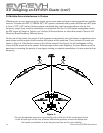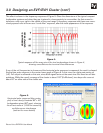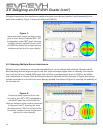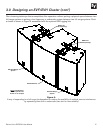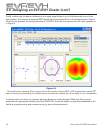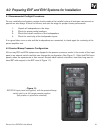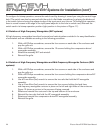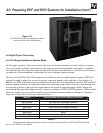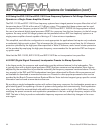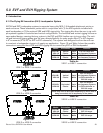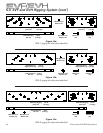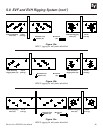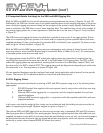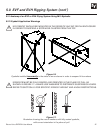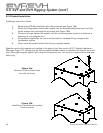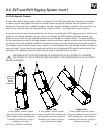
Electro-Voice EVF/EVH User Manual22
4.0 Preparing EVF and EVH Systems for Installation (cont’)
4.52 Using the EVF-1121S and EVF-1151S Low-Frequency Systems in Full-Range Clusters that
Operate on a Single Power-Amplifier Channel
The EVF-1121S and EVF-1151S low-frequency systems have integral passive low-pass filters that roll off
frequencies above 100 Hz at the rate of 12 dB per octave. This means that these systems can be used
to augment the low-frequency output of the EVF-1122/XX and EVF-1152/XX full-range systems without
the use of an external digital signal processor (DSP) for crossover from the low-frequency to the full-range
systems. As many as two full-range systems can be paralleled with an EVF low-frequency system on a
single power-amplifier channel capable of driving a 2.1-ohm minimum impedance.
This simplified, cost-effective configuration is most appropriate for applications that require only moderate
or moderately high acoustic output. This is because the full-range systems cannot have the full infrasonic
protection provided by the high-pass filters specified in Table 3. However, useful overall cluster protection
will be provided by employing the high-pass frequency recommended for the particular EVF low-frequen-
cy system used.
Note that the EVF-1181S, EVF-2121S, and EVF-2151D do not incorporate a low-pass filter.
4.53 DSP (Digital Signal Processor) Loudspeaker Presets for Biamp Operation
In the biamp mode, the crossover and equalization must be achieved external to the loudspeaker. This
is typically done with a digital signal processor (DSP) that has crossover and equalization filters that are
adjusted by the manufacturer to provide the essentially flat frequency response mentioned above. The fac-
tory presets for the EVF and EVH loudspeakers have been determined for Electro-Voice processors and
are available for download at www.electrovoice.com. Presets for other popular processors often can be
provided by the Bosch Communications Systems/Electro-Voice technical support group; specific contact
information can be found at www.electrovoice.com.
By providing a single loudspeaker system with uniform frequency response, the loudspeaker presets are a
good starting point for equalizing a cluster of systems during setup and commissioning. Final equalization
of a cluster should be accomplished with additional equalization made in front of the DSP device, not by
modifying the preset crossover and equalization parameters in the low- and high-frequency outputs of the
DSP. The later is likely to produce undesirable frequency-response and directivity changes in the cross-
over region.



